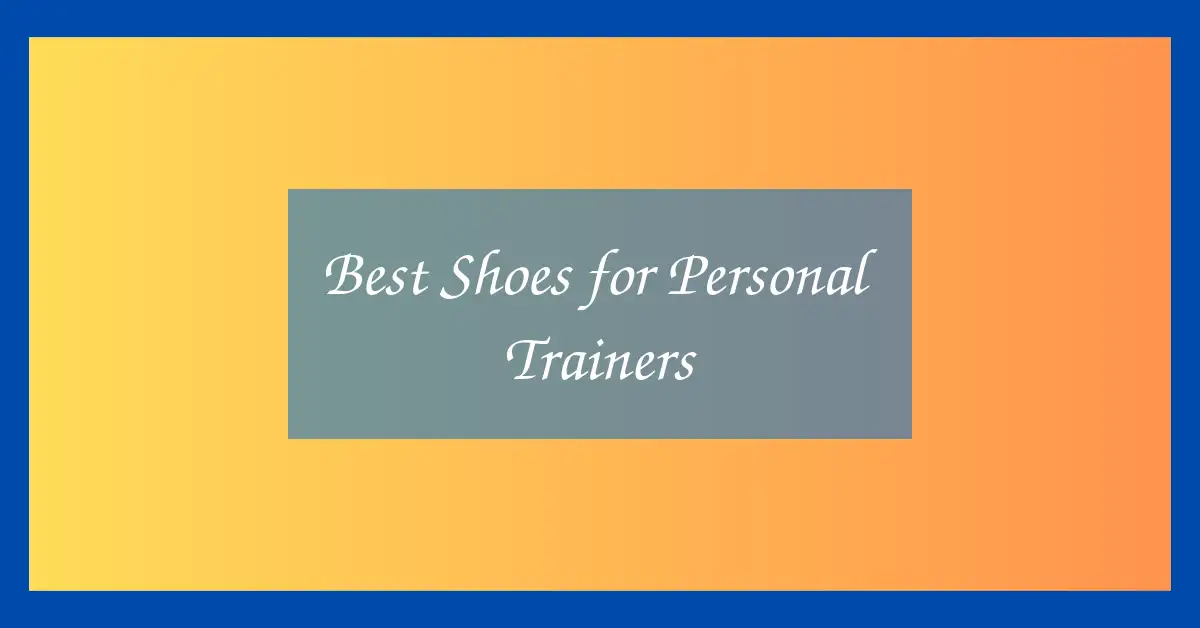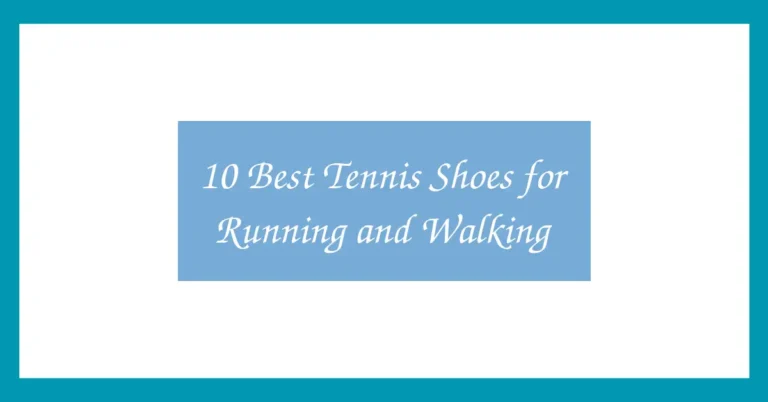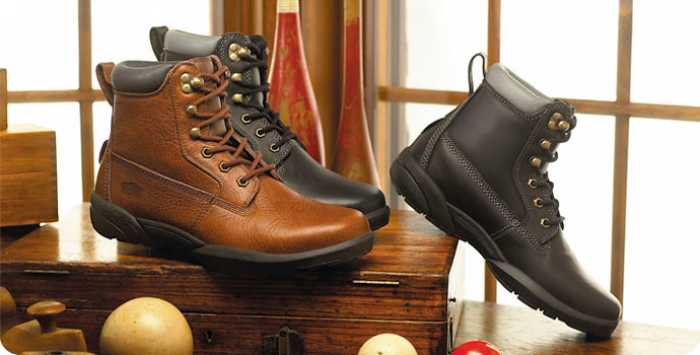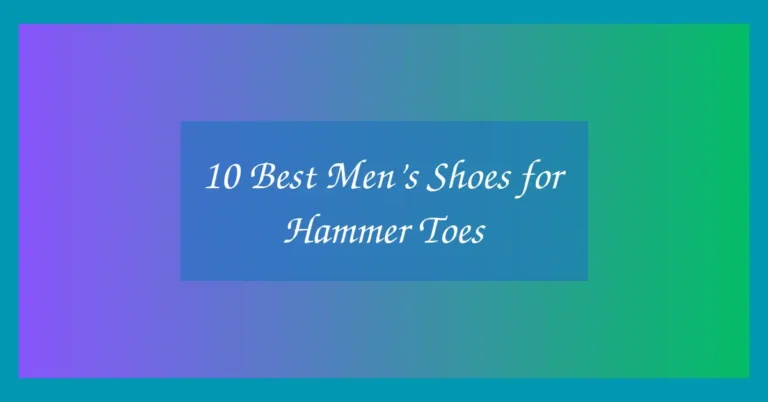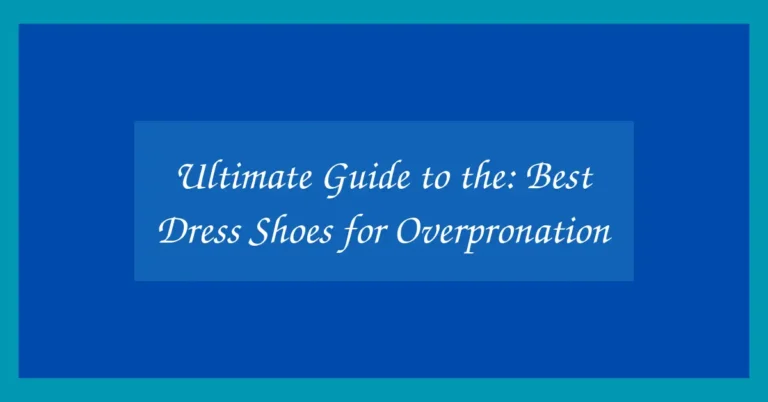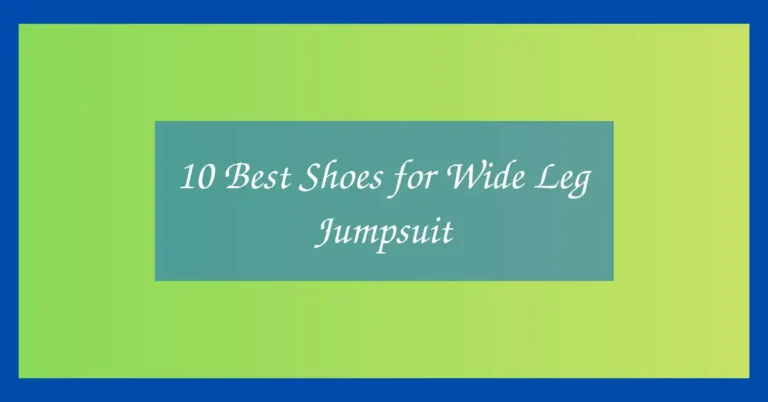Best Shoes for Personal Trainers
As a personal trainer, you spend hours on your feet, coaching, demonstrating exercises, and moving swiftly between clients. The wrong pair of shoes can quickly lead to discomfort, fatigue, and even injury. That’s why choosing the right footwear is more than a matter of style it’s essential for long-term health and peak performance. The best shoes for personal trainers offer the perfect blend of support, traction, and all-day comfort, keeping you energized through back-to-back sessions. Whether you lead strength training workouts, HIIT classes, or corrective exercises, your shoes should offer lateral stability, cushioned midsoles, and a flexible, non-slip outsole. This guide will walk you through exactly what to look for, what to avoid, and answer common questions so you can invest in footwear that works as hard as you do.
Best Shoes for Personal Trainers
Table of Contents
Toggle1. Nike Metcon 9
The Nike Metcon 9 is widely regarded as one of the most well-rounded training shoes on the market. Designed with versatility in mind, this shoe blends durability, support, and responsiveness ideal for personal trainers who move between coaching strength, agility, and cardio sessions. The updated Hyperlift plate in the heel provides added stability during weightlifting, while the firm but cushioned midsole offers enough comfort for extended wear.
The wide base delivers strong lateral support, and the upper is made from breathable mesh with synthetic overlays for added durability. A standout feature is the rope-wrap rubber sidewall, which makes the Metcon 9 particularly useful for trainers demonstrating rope climbs or HIIT movements. It also features a dual-density midsole that keeps the foot grounded during explosive movements.
Traction is excellent thanks to the full-rubber outsole with flex grooves that adapt to varied surfaces. Despite its focus on performance, the shoe maintains a sleek, professional look suitable for both in-gym and casual use. Trainers who do a mix of lifting, plyo, and walking will find this shoe highly supportive.
However, if your training focus leans more toward long-distance running or high-impact cardio, the shoe may feel slightly rigid. But for all-around gym functionality, it’s hard to beat.
Pros:
-
Excellent heel stability for lifting
-
Breathable yet durable upper
-
Great traction for dynamic movement
-
Rope wrap sidewalls enhance grip during climbs
-
Wide base improves lateral support
Cons:
-
Slightly heavy for running
-
Break-in period needed for some users
-
Limited colorways for professional settings
2. Reebok Nano X3
Reebok’s Nano X3 is built with functional training in mind, and it performs exceptionally well in a personal training context. The shoe features Reebok’s Lift and Run Chassis system, which adapts to both lifting and running movements, making it ideal for trainers who transition between strength demos and active cardio.
Its Flexweave upper offers a breathable yet supportive fit, and the midfoot structure delivers both stability and comfort. The shoe feels flexible enough for dynamic exercises but doesn’t sacrifice stability under heavy load demonstrations. Trainers often appreciate the decoupled heel, which helps reduce fatigue during prolonged standing.
The outsole grips well on rubber gym floors and turf, making it useful for both indoor and outdoor coaching sessions. Comfort is a major highlight, thanks to the cushioned forefoot and added padding around the collar and heel. For long training days, the Nano X3 holds up without foot fatigue.
While it’s versatile, those who primarily teach or perform high-mileage runs might find the sole too firm. But for the demands of a trainer’s routine strength, movement, and stability it ticks all the right boxes.
Pros:
-
Lift and Run Chassis provides adaptive support
-
Breathable yet supportive Flexweave upper
-
Cushioned for long wear sessions
-
Grippy outsole works across surfaces
-
Strong heel support for lifting
Cons:
-
Too rigid for distance running
-
Bulky feel for some users
-
Not ideal for very narrow feet
3. Under Armour TriBase Reign 5
The Under Armour TriBase Reign 5 is built for stability and ground contact, making it a strong choice for personal trainers who focus on strength, mobility, and functional movements. The shoe’s signature TriBase outsole offers excellent ground feedback and traction, which is crucial when demonstrating squats, deadlifts, and lunges.
Its low-profile build enhances stability, while the full-rubber outsole adds durability and multi-surface grip. The Reign 5 features a tougher mesh upper with abrasion-resistant overlays, ensuring it holds up well against gym equipment wear and tear. A firm external heel counter supports the ankle during lateral moves and quick direction changes.
The shoe also incorporates strategic cushioning in the forefoot, which helps during dynamic exercises like box jumps or sprints. Despite its solid base, the upper is flexible enough to accommodate foot expansion during high-rep sessions. It’s lightweight and sleek, which many trainers appreciate for all-day wear.
However, the low heel-to-toe drop and firm midsole may not suit trainers who require high cushioning or work long cardio-based shifts. Still, it remains a top pick for performance-focused coaching.
Pros:
-
Excellent ground contact and stability
-
Durable construction with reinforced mesh
-
External heel counter for added support
-
Flexible forefoot for agility work
-
Secure fit with good lockdown
Cons:
-
Firm midsole not ideal for all-day wear
-
Not suitable for long cardio sessions
-
Toe box may feel snug for wider feet
4. Adidas Dropset Trainer 2
The Adidas Dropset Trainer 2 is designed with personal trainers and strength coaches in mind. It features a dual-density midsole that offers a balance of softness under the forefoot and firmness in the heel, ideal for trainers transitioning between lifting, lunging, and light cardio. The 6mm heel-to-toe drop promotes better posture during squats and deadlifts.
A standout element is the shoe’s broad, stable platform, which increases confidence during heavy movement demos. The grippy rubber outsole provides excellent traction on polished gym floors, while the heel’s extra stability makes it easy to maintain balance during dynamic exercises.
Comfort is another high point. The shoe includes a breathable mesh upper with reinforcement in high-stress zones and a padded tongue and collar for ankle comfort. Trainers who move between clients for hours will find it comfortable and secure without hot spots or irritation.
Though its appearance leans more athletic than lifestyle, it’s polished enough for workwear in most gyms. That said, it’s not ideal for high-mileage cardio or running-based trainers.
Pros:
-
Dual-density midsole enhances versatility
-
Stable platform ideal for strength training
-
Comfortable upper with padded fit
-
Grippy and durable outsole
-
Great heel support for posture-driven moves
Cons:
-
Not for long-distance running
-
Less flexible than some cross-trainers
-
Limited arch support for flat-footed users
5. NOBULL Trainer+
The NOBULL Trainer+ is a durable and stylish option tailored for trainers who value both aesthetics and function. With its minimalist design, it’s a favorite in boutique gyms and training studios. The shoe’s SuperFabric upper is extremely tough yet breathable, resisting abrasion from equipment and repeated use.
Its flat, wide outsole provides a stable base for weightlifting, and the firm midsole ensures ground contact during controlled movement. Despite its simple look, the Trainer+ performs well during high-intensity circuits, bodyweight demos, and even light cardio. It’s especially good for trainers who prefer minimalist or barefoot-like training shoes.
While cushioning is minimal, the shoe is surprisingly comfortable for short-to-moderate sessions. The heel is reinforced for extra stability, and the outsole grips well on rubber and hardwood surfaces. The sleek design makes it wearable in and out of the gym, giving it strong visual appeal for client-facing roles.
That said, the shoe isn’t ideal for those needing lots of arch support or cushion-heavy comfort during long shifts. But for clean form demonstrations and versatile use, it holds up well.
Pros:
-
Ultra-durable SuperFabric upper
-
Sleek, professional appearance
-
Flat, wide outsole for balance
-
Good traction for gym floors
-
Versatile for most training types
Cons:
-
Minimal cushioning
-
Lacks strong arch support
-
May feel stiff during cardio or jogging
6. Puma Fuse 2.0
The Puma Fuse 2.0 is a performance-oriented training shoe built with serious gym users and trainers in mind. With its low-to-the-ground construction and a wide stable base, it provides reliable stability during heavy lifts and dynamic exercises. The shoe’s design supports multi-directional movement, making it a good fit for functional trainers who demonstrate a variety of workout types.
It features a full-rubber outsole with a traction pattern that provides solid grip across gym surfaces. The upper combines mesh and synthetic overlays for breathability and abrasion resistance. The Fuse 2.0 also incorporates a TPU heel clip that enhances lateral support and keeps the foot secure during side-to-side movement or agility drills.
Cushioning is minimal but effective, offering just enough shock absorption for comfort without compromising stability. Trainers who perform strength and conditioning sessions will appreciate its solid underfoot feel and lockdown fit. It’s also lightweight and stylish, making it easy to wear throughout the workday.
However, the shoe may feel too firm for prolonged wear or long walking sessions. It also lacks plush cushioning, which could be an issue for trainers with joint sensitivity or foot fatigue.
Pros:
-
Very stable and low to the ground
-
TPU heel clip offers lateral support
-
Grippy outsole for traction
-
Breathable upper with good durability
-
Lightweight and athletic look
Cons:
-
Minimal cushioning for long hours
-
Not ideal for running or cardio
-
Toe box may feel tight for wide feet
7. Inov-8 F-Lite G 300
The Inov-8 F-Lite G 300 stands out for its rugged performance and exceptional grip, making it ideal for trainers who incorporate strength, agility, and outdoor sessions into their routine. It’s one of the few training shoes that use graphene-enhanced rubber, resulting in an extremely grippy and durable outsole.
This shoe provides a snug, glove-like fit that keeps your foot locked in during rapid changes of direction. The external heel cage and wide toe box offer both security and natural foot splay, key for squat and deadlift demonstrations. The midsole is firm but slightly more cushioned than a standard lifting shoe, offering comfort without sacrificing stability.
Another standout feature is the upper, which combines breathable mesh with a flexible internal liner, delivering both ventilation and structure. It’s lightweight enough for short runs and mobile sessions but strong enough for barbell and kettlebell work.
The F-Lite G 300 does run slightly narrow, so it may not be suitable for those with very wide feet. It’s also more expensive than many alternatives, but its build quality justifies the price for daily, high-demand use.
Pros:
-
Graphene-enhanced outsole for unmatched grip
-
Strong lateral and heel support
-
Excellent for hybrid workouts
-
Durable, breathable upper
-
Lightweight for dynamic movement
Cons:
-
Higher price point
-
Slightly narrow fit
-
Not ideal for casual wear
8. ASICS Gel-Quantum 180 7
The ASICS Gel-Quantum 180 7 bridges the gap between athletic performance and everyday comfort, making it a great choice for personal trainers who spend long hours on their feet. Its signature GEL cushioning provides excellent shock absorption, which helps reduce fatigue during extended sessions.
This shoe is less about max stability and more about wearable comfort. It’s ideal for trainers who walk a lot, offer wellness-focused training, or provide on-the-go coaching. The upper features a sleek mesh design that keeps the foot cool, while the overall aesthetic is clean enough for both gym floors and public-facing environments.
While it lacks the flat sole and firm base needed for heavy lifting, it compensates with all-day wearability and underfoot comfort. The midsole offers a slightly bouncy ride, making it good for light cardio or interval training. The outsole is durable and works well on most surfaces, though it’s not as grippy as cross-trainers.
This isn’t the shoe for deadlifts or max squats, but for client-focused trainers who need comfort and flexibility across multiple training types, it’s an excellent option.
Pros:
-
Outstanding GEL cushioning
-
Comfortable for all-day wear
-
Lightweight, breathable upper
-
Sleek, stylish design
-
Good shock absorption
Cons:
-
Not ideal for heavy lifting
-
Slightly elevated heel drop
-
Less lateral support than cross-trainers
9. New Balance Minimus TR
The New Balance Minimus TR offers a minimalist, barefoot-inspired experience that still maintains key structural support, perfect for trainers who value ground contact and natural foot movement. With a 4mm drop and a wide forefoot platform, it allows your toes to splay naturally, which can improve stability and mobility.
Its Vibram outsole ensures excellent traction and flexibility, and the mesh upper is breathable, lightweight, and surprisingly durable. This makes it a top pick for trainers who emphasize functional fitness, barefoot-style workouts, or bodyweight training. It’s also great for one-on-one or corrective movement coaching where form is the priority.
Despite its minimal build, the shoe still offers moderate arch support and underfoot protection. The interior lining is soft enough for sockless wear, and it adapts quickly to the foot’s shape. The low profile also makes it easy to pack or carry, ideal for mobile trainers.
However, this shoe lacks cushioning, so it may not be comfortable for high-impact exercises or prolonged standing. It’s best suited for trainers with strong foot muscles or those transitioning from traditional trainers.
Pros:
-
Natural feel with 4mm drop
-
Wide forefoot enhances balance
-
Vibram outsole for superior grip
-
Lightweight and breathable
-
Great for barefoot-style training
Cons:
-
Not suitable for high-impact sessions
-
Minimal cushioning
-
May need adjustment period
10. Hoka One One Kawana
For personal trainers who emphasize recovery, cardio, or long movement sessions, the Hoka Kawana is a strong contender. Known for its plush cushioning and rocker-style geometry, this shoe helps reduce foot fatigue and joint stress, particularly valuable during long shifts.
The compression-molded foam midsole offers a soft, responsive feel, while the extended heel design enhances stability during heel strikes. Trainers who walk with clients, teach active recovery sessions, or perform mobility-focused workouts will appreciate the lightweight comfort and shock absorption. The engineered mesh upper is breathable and adapts to foot shape for long-lasting comfort.
Though the shoe feels luxurious on foot, it’s not ideal for lifting heavy weights due to its soft sole and high stack height. It also lacks lateral support, making it less suitable for agility drills or quick pivots. But if comfort is your top priority, few shoes beat the Kawana for all-day wear.
The design is also more lifestyle-oriented, which can be a bonus for trainers who move between gym and errands.
Pros:
-
Exceptionally cushioned for long wear
-
Rocker sole promotes smooth transitions
-
Great for recovery and walking sessions
-
Lightweight and breathable
-
Stylish, lifestyle-inspired design
Cons:
-
Not suitable for heavy lifting
-
High stack height reduces stability
-
Less lateral support
Buyer’s Guide
Choosing the right shoes as a personal trainer involves more than just comfort it’s about supporting your biomechanics, protecting your joints, and improving your daily performance. Here’s a breakdown of the key features to consider:
1. Durability
As a trainer, you’ll wear your shoes for multiple hours a day, often on various surfaces like gym mats, turf, or hardwood. Look for shoes with reinforced outsoles, double-stitched overlays, and high-abrasion rubber. Cross-training shoes typically offer better longevity compared to running-specific footwear.
2. Grip and Traction
Good traction is vital for dynamic movement, especially if you demonstrate exercises like lunges, squats, or agility drills. Opt for shoes with multidirectional tread patterns and rubber soles that maintain grip on both gym floors and rubber mats.
3. Support and Stability
Lateral support is crucial for multi-directional movements. A stable heel counter, firm midsole, and wide base will reduce your risk of ankle rolls or knee misalignment. Shoes with medial and lateral outrigger support are ideal for trainers who coach high-intensity sessions or plyometrics.
4. Cushioning and Comfort
Personal trainers spend long hours standing and walking. Shoes with ample midsole cushioning—like EVA foam or proprietary blends (e.g., Nike React, Adidas Bounce)—can prevent fatigue and heel pain. However, avoid overly soft soles if you do weightlifting demonstrations, as they can compromise stability.
5. Breathability
Footwear with mesh uppers or ventilation panels helps wick away moisture and reduce overheating. This is especially important during back-to-back sessions or workouts in warmer environments.
6. Fit and Flexibility
Your shoes should feel snug without being restrictive. A roomy toe box allows for natural toe splay during squats and lunges. Flex grooves or split soles can also improve mobility during functional exercises.
What to Avoid:
-
Running shoes for lifting: Running shoes often lack lateral support and have high heel-to-toe drops, which aren’t ideal for stability during strength work.
-
Slip-on or casual sneakers: These may be comfortable for errands but often lack structure and support for professional use.
-
Worn-out shoes: Replace shoes every 300–500 miles of use or when the tread wears out, especially if you train multiple clients daily.
FAQ
1. What type of shoe is best for a personal trainer—running, cross-training, or lifting shoes?
Cross-training shoes are generally the best choice for personal trainers. They provide the right balance of lateral support, cushioning, and stability for a wide range of activities, from demonstrating lifts to guiding plyometric drills. Running shoes lack the side-to-side stability, and lifting shoes are too rigid for dynamic movement.
2. How often should personal trainers replace their shoes?
If you train daily, you should consider replacing your shoes every 3–6 months, or after approximately 300–500 miles of use. Signs of wear include flattening of the midsole, loss of grip, and uneven tread wear, all of which can lead to discomfort or injury.
3. Are minimalist or barefoot-style shoes good for trainers?
Minimalist shoes can benefit trainers who focus on bodyweight, balance, or barefoot-style training. However, they require strong foot muscles and may not be suitable for all-day wear or high-impact demonstrations. It’s best to transition gradually if you choose this style.
4. Can one pair of shoes work for both cardio and strength training sessions?
Yes, many cross-training shoes are versatile enough to support both. Look for pairs that have firm midsoles (for stability during lifts) and enough cushioning for comfort during short cardio bursts or HIIT classes. Brands like Nike Metcon or Reebok Nano are designed with this hybrid functionality in mind.
5. Should personal trainers prioritize cushioning or stability?
It depends on your specific activities. If you spend most of your day walking and standing, prioritize cushioning to reduce fatigue. If your sessions include weightlifting or lateral drills, lean toward stability. Ideally, find a shoe that balances both for versatility.
6. Are high-top shoes better for ankle support?
Not necessarily. While high-tops can add some support around the ankle, proper shoe design, like a wide base and firm heel counter contributes more to overall stability. Ankle support should come from the shoe’s structure, not just its height.
7. What’s the most important feature in a shoe for long training days?
Comfort is key for long training days, but it must be paired with functional support. Look for a shoe with responsive cushioning, breathable materials, and solid grip. Bonus features like removable insoles or arch support can further enhance comfort throughout your workday.
Conclusion
Personal trainers need footwear that offers stability, support, and long-lasting comfort to perform their best and prevent injury. The right pair of shoes should match your training style whether you’re coaching strength, agility, or recovery. Prioritize durability, traction, and fit, and avoid overly soft or unstable shoes for lifting. With the right choice, your shoes can power every session.

